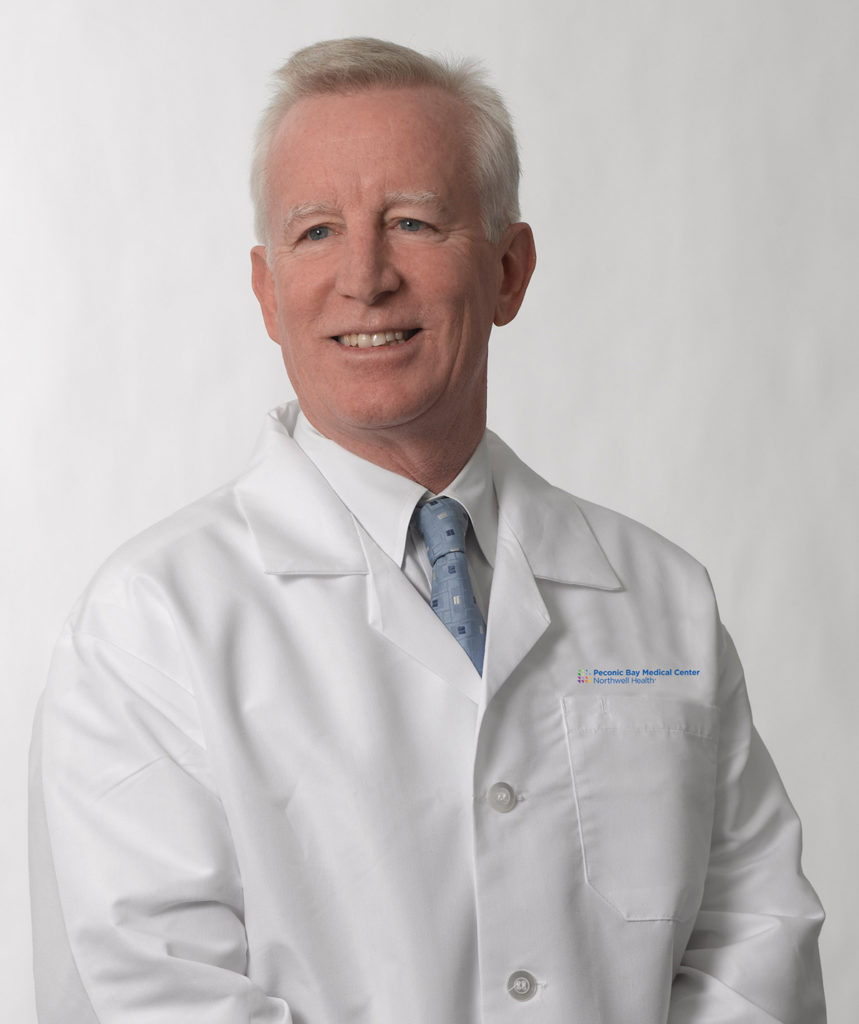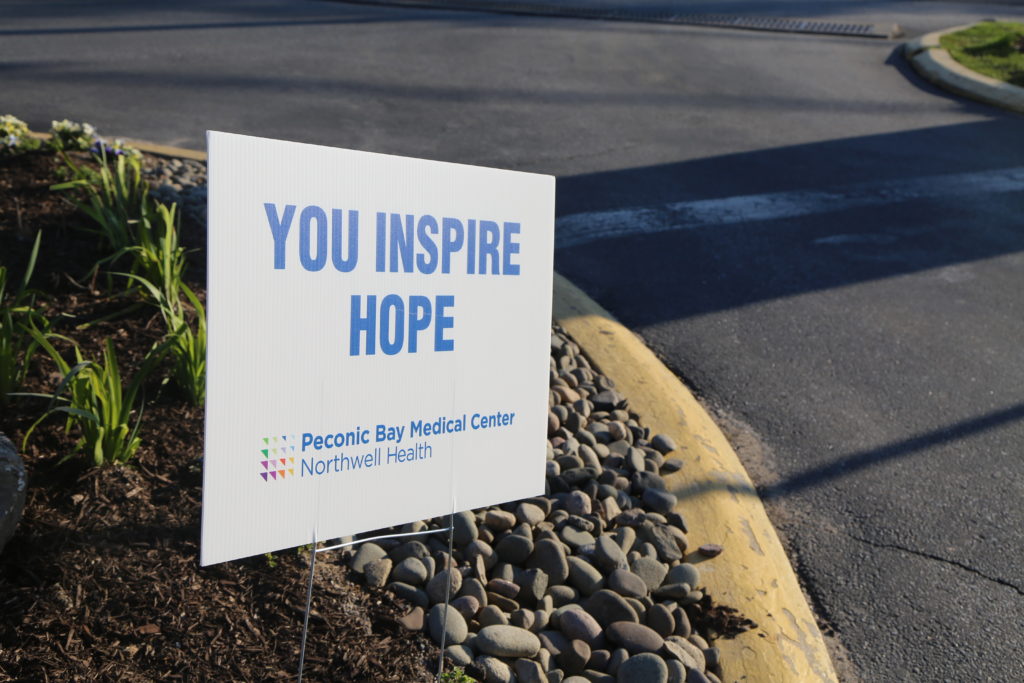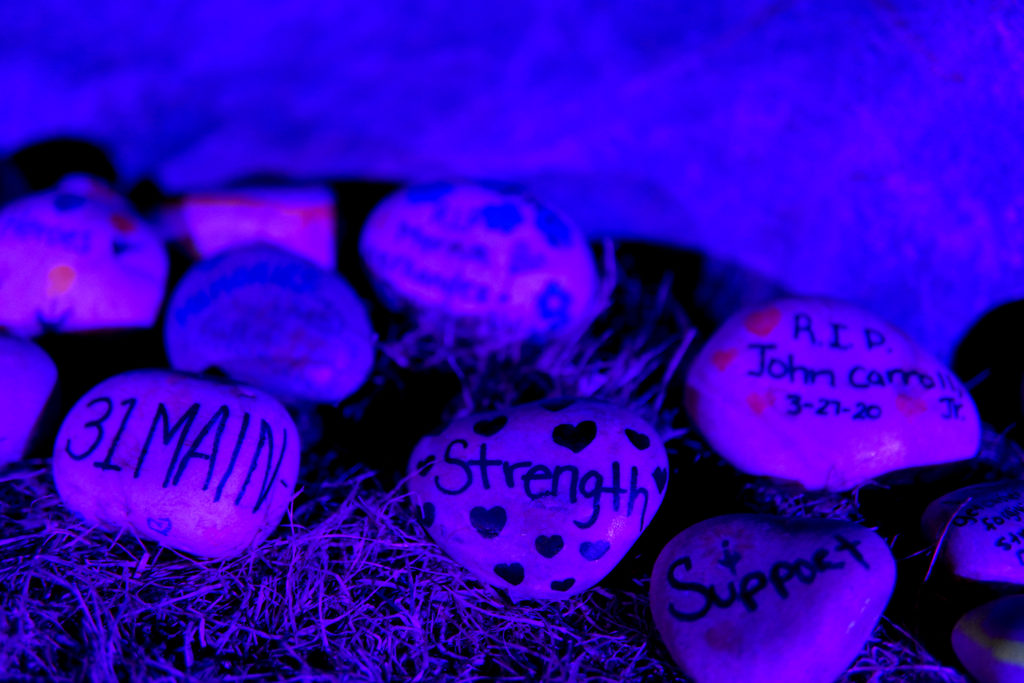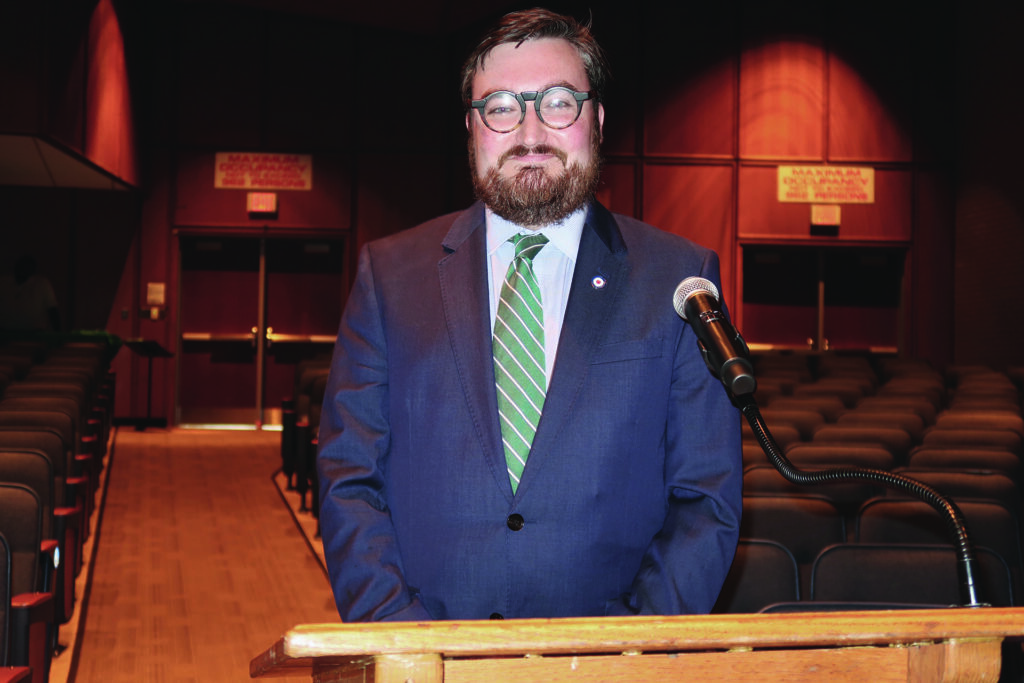One year later, reflecting on the ‘tsunami of sickness’ that hit PBMC in two waves

It was in mid-March last year, just a few days after Suffolk County’s first confirmed COVID-19 case, when Dr. Lawrence Walser sat at a small desk where he would write notes for himself, physician assistants and residents at Peconic Bay Medical Center. Directly behind him, through closed doors, he could see the first COVID patient who had been admitted to the hospital’s intensive care unit.
So much was unknown at the time about COVID-19, which had just been officially labeled a global pandemic by the World Health Organization. Dr. Walser reminded his colleagues to keep their masks on and to be careful around the patient.
They wondered how many more patients would be headed their way.
“By the end of the week we were entirely filled,” said Dr. Walser, director of pulmonary and critical care at PBMC. “And that’s when it hit. Like, ‘Oh my God, this is not fake news. This is legitimate, scary stuff.’ ”
Shortly after St. Patrick’s Day, the reality of an unprecedented health crisis that once seemed a world away had hit home in Riverhead.
“Brace yourself,” Dr. Walser recalled saying.
In January 2020, officials held a ribbon-cutting ceremony for PBMC’s new critical care pavilion and heart center — a $67.8 million project that had been under construction for three years. The formal opening had been delayed while the hospital finalized its certificate of occupancy with Riverhead Town and state Department of Health approvals.
Just as the first COVID patients began to arrive, PBMC formally opened the Corey Critical Care Pavilion, allowing 16 more ICU beds to be put to immediate use.
“We filled virtually every single one of them up so we had two ICUs running for maybe four weeks,” Dr. Walser said. “It was an abundance of people, like 26 to take care of instead of 12 or 16, so it was a lot.”

With nearly 35 years’ experience, Dr. Walser, who lives in Southold, had been through the H1N1 outbreak that saw people in the United States become sicker than usual and die from the novel influenza in 2009. He had treated about four patients at that time who died from H1N1, all fairly young. That, he recalled, had been a stressful time.
But that proved to be nothing compared to what transpired with COVID-19.
“This was like a tsunami of sickness,” Dr. Walser said.
See also: Hope emerges for future
Over the past 12 months, the team of physicians, nurses and technicians at PBMC have handled two major waves of COVID-19 patients. Dr. Walser estimated about 100 patients were treated in the ICU during the first wave, nearly all of whom required ventilators. During the second wave, which picked up around mid-November, about 50 patients needed the ICU. The good news was only about half of those patients required a ventilator.
More than 500 people in Suffolk County were in intensive care units in early to mid-April.
Looking back at the people who required ICU care, Dr. Walser said they were largely middle-aged; not so much the elderly population. The Hispanic population and, to a lesser extent, African Americans were hit hardest, he said.
“A typical case would be a Hispanic male in his 50s with a history of hypertension, diabetes and possible obesity and they all seemed to be risk factors for getting sick and getting sicker,” he said.
See also: 2020 Person of the Year, Dr. Lawrence Walser
Patients with serious health issues, such as those undergoing chemotherapy or with lung problems caused by smoking, never did fill the ICU as they initially expected might happen.
“It targeted people who you think are generally healthy,” Dr. Walser said.
The ICU doctors at PBMC would often be called to evaluate patients in the regular part of the hospital to see if their condition had started to deteriorate with shortness of breath and low oxygen saturation despite the maximum oxygen support being provided. Dr. Walser recalled seeing one middle-aged man who was struggling to breathe.
He pleaded with Dr. Walser to keep him off a ventilator. He feared that once he went on the machine, which required intubation, he wouldn’t make it.

“He looked so frightened and I felt so bad for him,” Dr. Walser said.
The patient ended up pulling through without ventilator assistance. A day or two later Dr. Walser saw him again.
“He said, ‘God bless you, I’m still here, thank you for not taking me,’ ” Dr. Walser said.
The initial emphasis to place patients on ventilators subsided as doctors learned a patient’s odds of surviving the ICU would be improved by staving off intubation as long as possible. A patient on a ventilator could remain intubated for up to three weeks, which can lead to other problems.
“If you can just have the person staying awake and breathing spontaneously on their own, they have a better chance of pulling through,” Dr. Walser said. “It’s just when their oxygen levels drop so severely and their life is threatened, that’s when we pull the trigger on it.”
A period of waiting and hoping followed the first wave of COVID-19. The staff had undergone six to eight intense weeks marked by extreme stress. Dr. Walser said he hoped they wouldn’t have to go through it again, but knew it was likely.
Luckily, the second wave never peaked to the same degree as the initial onslaught.
“If it had been the same or even worse than last April, it’d be crushing for the health care workers,” he said.
PBMC avoided any major outbreak of COVID-19 among staff, Dr. Walser said. While some staff members caught the virus, it appeared to be outside work, he said. The staff also had adequate amounts of personal protective equipment even when supplies were strained early on. He said it was important for all staff members to feel as safe as possible. Dr. Walser said they implemented various protocols to help limit exposure, such as reducing the number of X-rays patients would receive so a technician did not have to enter the room as frequently. Nurses ran long intravenous lines that stretched to outside a patient’s room so they could be changed from a safe distance with the door closed.

“We really are going to protect each other,” Dr. Walser said. “We don’t want anybody harmed and we’re going to have each other’s backs.”
Treatment of COVID-19 continues to evolve as clinical trials continue and data comes in from across the world. Various anti-viral and immune-modulating drugs — such as hydroxychloroquine — that were recommended for use against COVID-19 early on proved ineffective, Dr. Walser said.
Antibiotics didn’t work either, and even convalescent plasma — a therapy that uses blood from people who have recovered from the coronavirus — may not work, he added.
“So there’s definitely a lot to be learned,” Dr. Walser said. “We’ve got to find something that is a specific target to reduce the severity of illness.”
Dr. Walser recalled a lot of brainstorming phone calls back in March and April. Northwell Health, the health care network PBMC operates under, sent out emails with updated guidelines for treating COVID patients. The hospital leadership held daily conference calls early on to bounce ideas around.
Those conversations continue to a lesser extent today.
The focus has now shifted toward vaccination to prevent people from getting ill. Dr. Walser said he’s received his vaccination and has been encouraging anyone who may be hesitant to push past that fear.
“I said, you know how many death certificates I’ve signed that said COVID-19 infection? A lot,” he said. “And you know how many I’ve signed that said adverse effect of vaccine, in my entire career? Zero.”
As vaccination distribution continues to ramp up, Dr. Walser said he sees a near future where people can start to breathe a sigh of relief.
“I’m hopeful,” he said.








